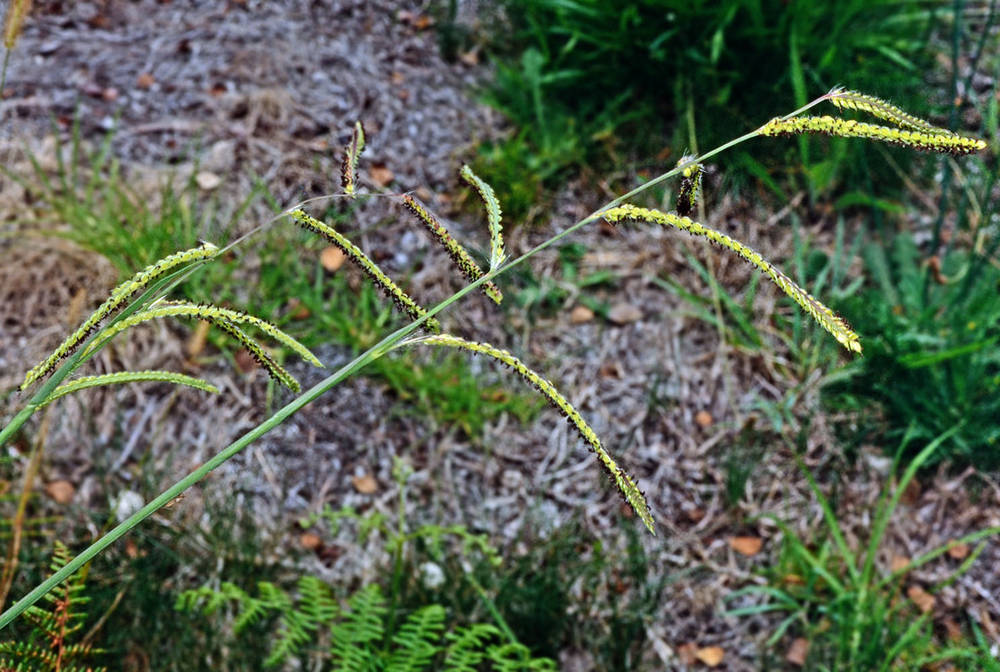Paspalum urvillei
Paspalum
paspalum
solid or hollow; erect, spreading or prostrate.
sheaths open;
auricles sometimes present;
ligules membranous;
blades flat or folded.
terminal or axillary; panicles with 1 to many spike-like branches;
branches spreading or erect, flattened, usually winged, usually terminating in a spikelet;
disarticulation below the glumes.
dorsiventrally flattened; plano-convex, subsessile to short-stalked; solitary or paired; in 2 rows along one side of the branches, with 2 florets; the lower sterile; the upper bisexual.
lower glumes absent, or present on only some spikelets in each branch; veinless or 1-veined; awnless;
upper glumes membranous with rounded tips; awnless.
orbicular to elliptical; plano-convex or flattened, white, yellow, or brown.
lower lemmas similar to upper glumes; upper lemmas convex; involute, clasping the paleas; straw-colored to dark brown; hard; smooth to slightly rugose.
Paspalum urvillei
Paspalum
Tropical and warm temperate regions worldwide. 300–400 species; 2 species treated in Flora.
Barbara Wilson, Richard Brainerd, Nick Otting
- Local floras:
CA,
OR,
WA
- Local Web sites:
CalFlora,
CalPhotos,
Flora NW,
PNW Herbaria
WildflowerSearch
iNaturalist (observations)
USDA Plants Database
- LBJ Wildflower Center
- SEINet
- Plants of the World Online
- Encyclopedia of Life
- Wikipedia
- Google Image Search


